I saw another thread concerning the 10 shot ladder test and figured I'd share my personal process for working up loads in my hunting rifles - if anything just to share my experience in case it helps someone out in the future.
I've used this method on 12 rifles so far, from 22 creedmoor up to 300 ultra mag and have refined it to the point where I can usually get a solid hunting load in under 25 shots, sometimes much less - 13 is my fewest thus far. For my hunting loads, I'm looking for a sub 3/8" group at 100 yards and at least an SD in the teens - usually I can achieve at least these results in my rifles.
I usually shoot bergers, but have also used this method with barnes ttsx, nosler accubonds, 131 blackjacks, hornady eldms and nosler partitions. I've also used a bunch of powders: H4350, Varget, H1000, Retumbo, RL26, VV N560, N565, and N570. I only list all of those to show that my experience has been with a fairly significant range of components.
The first step I do is determine which bullet I want to shoot in my rifle and get a modified case for my caliber rifle. Then I measure the OAL of the chamber 5-6 times and get an average. I've had the most luck with starting 20 thousands off the lands with any bullet for the initial OAL.
The next step I do is look at various reloading books and online reloading info to identify which powders have worked the best for other shooters and which one gets me to as close to 100% fill of the case as possible, without shooting compressed loads.
I then load up 10 rounds for a pressure test, in .5 grain increments, all at 20 thousands off the lands and with the highest charge weight at my estimated max for that particular load.
My first range trip is spent shooting shooting these rounds over a magneto speed chrono, in 3 shot strings. I document the velocities and try to identify a "flat spot" within the 9 shots, as well as identifying where on the target the rounds impacted - if you have 2 shots that are close in velocity and in the same hole or very close on the target, you usually will have no problem with the 2nd range trip. I'm also looking for pressure signs, so If I max out and get a stiff bolt or significant marks on the brass before the 10th shot, I don't bother trying to shoot all 10.
*At this point in load development, I can tell if this powder and bullet combo are going to work for me. Usually you get some sort of flat spot across the .5 grain increments, but if they are all spread out 20-40 fps, I either change primers or give up on the combo and move onto another powder. I have chased a load with a powder for 50 shots trying to dial it in to an acceptable load for me when this first range trip didn't show promising results and it's never given me both low SD's and small groups.
Here's an example of my last pressure test on my 264 win mag with VV N570 and 156gr bergers (I have a custom chamber, thus why I'm going over max suggested charge weights):
66.5 - 2,907 fps
67.0 - 2,949 fps
67.5 - 2,974 fps
68.0 - 3,007 fps
68.5 - 3,063 fps**
69.0 - 3,068 fps**
69.5 - 3,104 fps
Max - 70.0 - 3,137 fps**
70.5 - 3,136 fps**
71.0 - 3,167 fps
In this example, you can see 2 distinct flat spots that I could revisit on my 2nd range trip - both in the single digits in differences in velocity. The ** indicate my expected accuracy nodes.
My 2nd range trip I load up 3 rounds @ 3 different OAL's - 10,20,30 thousands off the lands; right in the middle of the "flat spot" from my selected potential accuracy node from the 1st range trip. In this example, I loaded up 70.3gr - this way I'm in the middle of the potential node, so if it's 100 degrees or 20 degrees when I'm hunting, I should still be in the accuracy window for the load.
I shoot these 3 OAL's starting with the 20 thousands off, if it shot well in the first test. It's not uncommon for me to have all 10 of the rounds in the first step in an inch at 100 yards.
If the 20 thousands load didn't shoot well enough, I'll then shoot the 10 and 30 thousands loads to see if it tightens up either direction. At this point, I've shot a max of 19 rounds, often less if I hit max on the first range trip and didn't shoot all 10 rounds OR if I didn't shoot all 9 rounds the 2nd trip because one of the OAL's shot so well that I didn't need to shoot the others.
*If a 3rd range trip is required, I will tweak the seating depth towards the direction that showed more promise - so if the 10 thousands load shot slightly tighter than the 20, I'll go to 5 thousands off, but usually for me I'm finished with finding the load after the 2nd range trip.
In this example above, the 20 thousands off load shot in the .2's, so I didn't shoot either of the OAL's. I was finished with finding my hunting load in 13 shots.
I've had pretty good luck with loading up 40-50 rounds with this load I've identified and getting a good 200 yard zero, then verifying dope out to 1,000 yards at a range. I've found that using the velocity from the initial pressure test gets you very close to your actual average velocity for data inputs in a rangefinder or ballistics app, so I don't even test for SD, ES anymore unless the load shoots so well that I just want to know. I have tested for these figures in 10 of the rifles and the lowest SD was 1 and the highest 13.
My goal throughout this entire process is to identify a hunting load that I can start shooting ASAP, with the fewest amount of time going back and forth from the range/reloading bench as possible. It also keeps me from using up a bunch of components by shortening the amount of rounds through the rifle on paper, and more practice on steel at distance to get used to the rifle.
I do not shoot competitions either on the bench, PRS, or ELR - if you do any of those, your process would definitely be more intense and involve more rounds. I'm strictly trying to get a hunting load as fast as possible so I can get out in the field and use the rifle. However, I have shot several groups under 3" at 1,000 yards with loads I have found using this method in multiple rifles - so it works pretty well for me.
I hope this helps someone else with their reloading in the future and I've attached some targets of the loads I've found using this method for a visual - these were all shot with different rifles and these were the loads I shot during the process described above.
My hunting rifles are usually 8.5 lbs - 10lbs ready to go, and all groups were shot with a bipod and rear sand bag for a rest.
I've used this method on 12 rifles so far, from 22 creedmoor up to 300 ultra mag and have refined it to the point where I can usually get a solid hunting load in under 25 shots, sometimes much less - 13 is my fewest thus far. For my hunting loads, I'm looking for a sub 3/8" group at 100 yards and at least an SD in the teens - usually I can achieve at least these results in my rifles.
I usually shoot bergers, but have also used this method with barnes ttsx, nosler accubonds, 131 blackjacks, hornady eldms and nosler partitions. I've also used a bunch of powders: H4350, Varget, H1000, Retumbo, RL26, VV N560, N565, and N570. I only list all of those to show that my experience has been with a fairly significant range of components.
The first step I do is determine which bullet I want to shoot in my rifle and get a modified case for my caliber rifle. Then I measure the OAL of the chamber 5-6 times and get an average. I've had the most luck with starting 20 thousands off the lands with any bullet for the initial OAL.
The next step I do is look at various reloading books and online reloading info to identify which powders have worked the best for other shooters and which one gets me to as close to 100% fill of the case as possible, without shooting compressed loads.
I then load up 10 rounds for a pressure test, in .5 grain increments, all at 20 thousands off the lands and with the highest charge weight at my estimated max for that particular load.
My first range trip is spent shooting shooting these rounds over a magneto speed chrono, in 3 shot strings. I document the velocities and try to identify a "flat spot" within the 9 shots, as well as identifying where on the target the rounds impacted - if you have 2 shots that are close in velocity and in the same hole or very close on the target, you usually will have no problem with the 2nd range trip. I'm also looking for pressure signs, so If I max out and get a stiff bolt or significant marks on the brass before the 10th shot, I don't bother trying to shoot all 10.
*At this point in load development, I can tell if this powder and bullet combo are going to work for me. Usually you get some sort of flat spot across the .5 grain increments, but if they are all spread out 20-40 fps, I either change primers or give up on the combo and move onto another powder. I have chased a load with a powder for 50 shots trying to dial it in to an acceptable load for me when this first range trip didn't show promising results and it's never given me both low SD's and small groups.
Here's an example of my last pressure test on my 264 win mag with VV N570 and 156gr bergers (I have a custom chamber, thus why I'm going over max suggested charge weights):
66.5 - 2,907 fps
67.0 - 2,949 fps
67.5 - 2,974 fps
68.0 - 3,007 fps
68.5 - 3,063 fps**
69.0 - 3,068 fps**
69.5 - 3,104 fps
Max - 70.0 - 3,137 fps**
70.5 - 3,136 fps**
71.0 - 3,167 fps
In this example, you can see 2 distinct flat spots that I could revisit on my 2nd range trip - both in the single digits in differences in velocity. The ** indicate my expected accuracy nodes.
My 2nd range trip I load up 3 rounds @ 3 different OAL's - 10,20,30 thousands off the lands; right in the middle of the "flat spot" from my selected potential accuracy node from the 1st range trip. In this example, I loaded up 70.3gr - this way I'm in the middle of the potential node, so if it's 100 degrees or 20 degrees when I'm hunting, I should still be in the accuracy window for the load.
I shoot these 3 OAL's starting with the 20 thousands off, if it shot well in the first test. It's not uncommon for me to have all 10 of the rounds in the first step in an inch at 100 yards.
If the 20 thousands load didn't shoot well enough, I'll then shoot the 10 and 30 thousands loads to see if it tightens up either direction. At this point, I've shot a max of 19 rounds, often less if I hit max on the first range trip and didn't shoot all 10 rounds OR if I didn't shoot all 9 rounds the 2nd trip because one of the OAL's shot so well that I didn't need to shoot the others.
*If a 3rd range trip is required, I will tweak the seating depth towards the direction that showed more promise - so if the 10 thousands load shot slightly tighter than the 20, I'll go to 5 thousands off, but usually for me I'm finished with finding the load after the 2nd range trip.
In this example above, the 20 thousands off load shot in the .2's, so I didn't shoot either of the OAL's. I was finished with finding my hunting load in 13 shots.
I've had pretty good luck with loading up 40-50 rounds with this load I've identified and getting a good 200 yard zero, then verifying dope out to 1,000 yards at a range. I've found that using the velocity from the initial pressure test gets you very close to your actual average velocity for data inputs in a rangefinder or ballistics app, so I don't even test for SD, ES anymore unless the load shoots so well that I just want to know. I have tested for these figures in 10 of the rifles and the lowest SD was 1 and the highest 13.
My goal throughout this entire process is to identify a hunting load that I can start shooting ASAP, with the fewest amount of time going back and forth from the range/reloading bench as possible. It also keeps me from using up a bunch of components by shortening the amount of rounds through the rifle on paper, and more practice on steel at distance to get used to the rifle.
I do not shoot competitions either on the bench, PRS, or ELR - if you do any of those, your process would definitely be more intense and involve more rounds. I'm strictly trying to get a hunting load as fast as possible so I can get out in the field and use the rifle. However, I have shot several groups under 3" at 1,000 yards with loads I have found using this method in multiple rifles - so it works pretty well for me.
I hope this helps someone else with their reloading in the future and I've attached some targets of the loads I've found using this method for a visual - these were all shot with different rifles and these were the loads I shot during the process described above.
My hunting rifles are usually 8.5 lbs - 10lbs ready to go, and all groups were shot with a bipod and rear sand bag for a rest.
Attachments
-
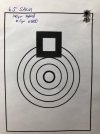 IMG_9424.jpg39.9 KB · Views: 178
IMG_9424.jpg39.9 KB · Views: 178 -
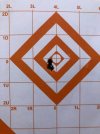 IMG_9891.jpg42.2 KB · Views: 172
IMG_9891.jpg42.2 KB · Views: 172 -
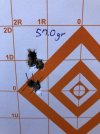 IMG_0362.jpg46.8 KB · Views: 160
IMG_0362.jpg46.8 KB · Views: 160 -
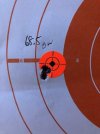 IMG_0947.jpg39.2 KB · Views: 155
IMG_0947.jpg39.2 KB · Views: 155 -
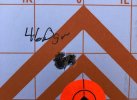 IMG_0948.jpg38.9 KB · Views: 151
IMG_0948.jpg38.9 KB · Views: 151 -
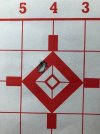 IMG_1768.jpg53.4 KB · Views: 148
IMG_1768.jpg53.4 KB · Views: 148 -
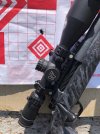 IMG_3046.jpg64.9 KB · Views: 151
IMG_3046.jpg64.9 KB · Views: 151 -
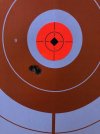 IMG_3421.jpg32.8 KB · Views: 151
IMG_3421.jpg32.8 KB · Views: 151 -
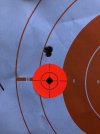 IMG_4756 (1).jpg35.8 KB · Views: 165
IMG_4756 (1).jpg35.8 KB · Views: 165
